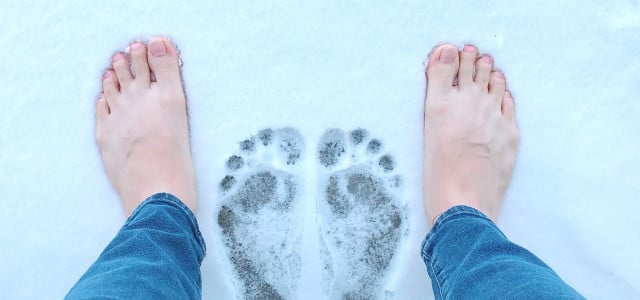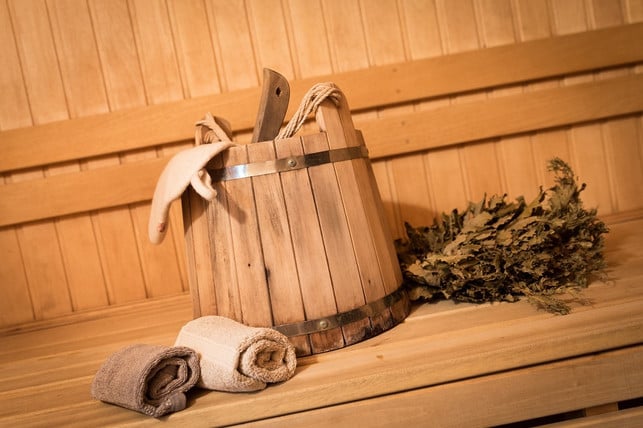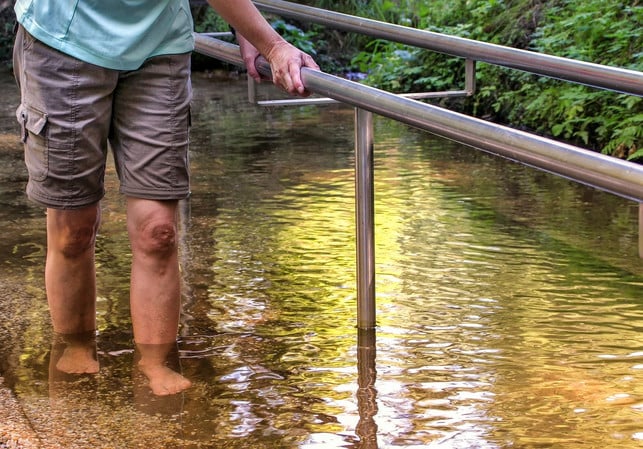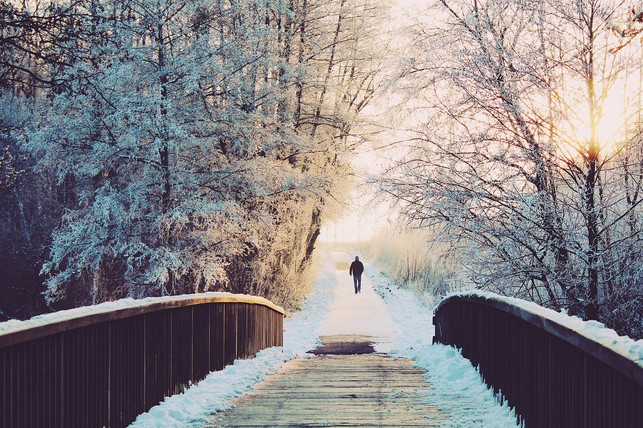
If you walk barefoot in the snow, you could get rid of cold feet in the long term. Walking in the snow is healthy for three reasons – in this article you will also find out how to start the barefoot exercise and what you need to pay attention to.
The idea of walking barefoot in the snow probably seems unusual to you. Images of frozen toes or chilblains immediately appear in your mind’s eye.
But actually the opposite is the case: a short walk barefoot in the snow hardens you against the cold.
It’s so healthy to be barefoot in the snow

(Photo: CC0 / Pixabay / Mariakray)
In principle, being barefoot in the snow has a similar effect on the body as cold water during a sauna or Kneipp treatment:
-
Blood circulation is stimulated – your feet and legs are better supplied with blood due to the cold. The “inventor” of the Kneipp cures, Sebastian Kneipp, recommended walking barefoot in the snow.
-
The metabolism is stimulated – the feeling of the cold snow under the soles of your feet gives you an adrenaline rush. And the hormone adrenaline boosts your metabolism. This means your body processes the carbohydrates and sugar from food more quickly.
-
The immune system is strengthened – studies see the possibility that the positive effects on circulation and metabolism can also be transferred to the immune system. However, this assumption has not yet been scientifically proven. With a strengthened immune system you can better prevent colds.
Caution! If you have kidney disease or pelvic health problems, you should seek medical advice before going barefoot in the snow.
Barefoot in the snow: This is how it works

(Photo: CC0 / Pixabay / analogicus)
Barefoot in the snow – it doesn’t have to be a hike. Similar to the cold water showers during the Kneipp treatment, even a short walk in the snow has a positive effect. A maximum of 30 seconds is enough for this. At first you might prefer to just walk in the snow for a few seconds. Over time and by getting used to the cold, you will eventually be able to do the recommended half minute.
This is how walking barefoot in the snow works:
- To prepare, have a towel and warm socks ready for afterwards.
- Always start with warmed up feet. The muscles should be well supplied with blood.
- While you’re barefoot in the snow, don’t stop, but keep moving.
- As soon as you feel the cold uncomfortably, stop walking barefoot.
- Dry your feet and slip into the warm socks.
If there is no snow, stepping on dew is an alternative. As early as the 19th century, Sebastian Kneipp advised his spa guests to go barefoot in the cool morning dew.
What else you should know

(Photo: CC0 / Pixabay / TanteTati)
Especially if your feet are not used to being barefoot in the snow, choose the right snow. The ideal snow for your barefoot excursion is freshly fallen snow. Snow that has been lying around for a long time forms sharp ice crystals that can hurt your feet.
Start in sunny weather with temperatures around zero degrees Celsius. Even if you’re barefoot, don’t forget to dress warmly. The body is busy keeping the feet warm. He needs protection in other places so that he doesn’t get too cold.
Read more on Techzle\.com:
- Barefoot hiking: Is hiking without shoes really possible?
- These minimal shoes will keep you warm: The best barefoot shoes for winter
- Contrast showers: This is how you can boost your immune system
** marked with ** or orange underlined Links to sources of supply are partly partner links: If you buy here, you are actively supporting Techzle\.com, because we then receive a small part of the sales proceeds. More info.